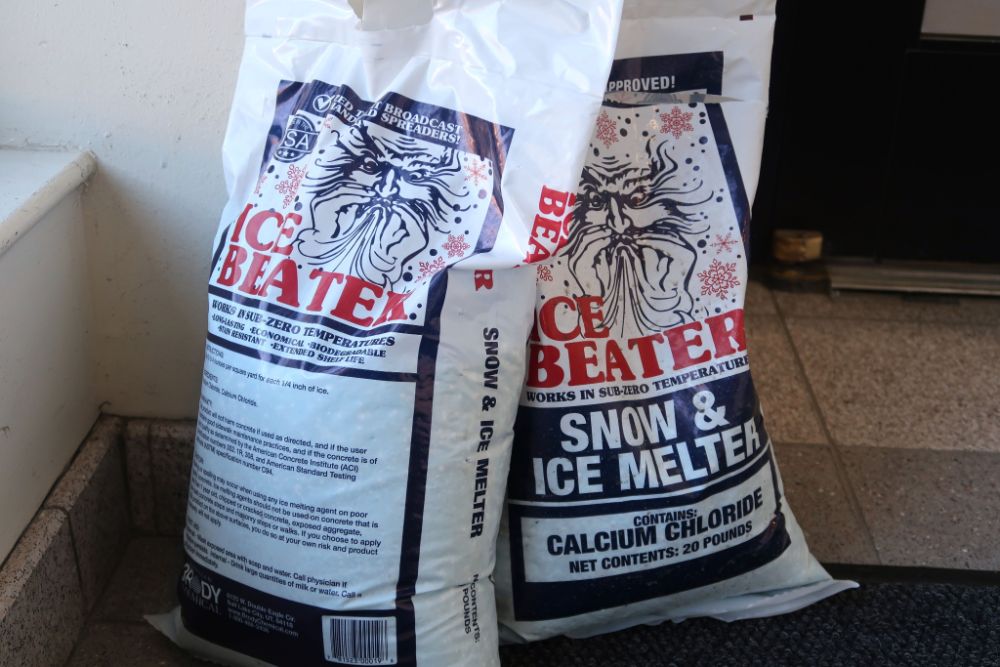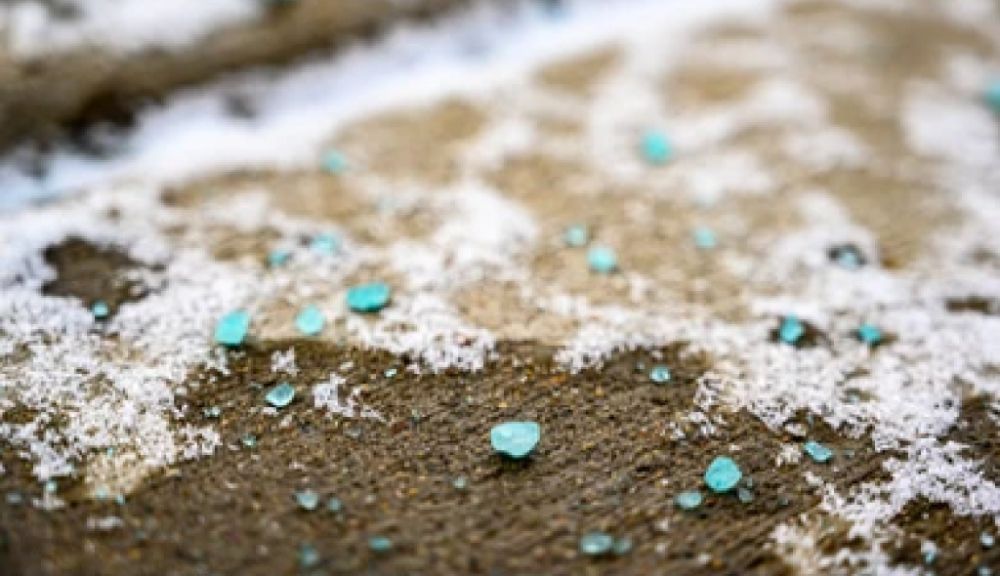Ice melt is a fantastic solution for keeping your paths and driveways dry and slip-free during winter months. Many of us living in colder climates need to use it fairly regularly, or risk serious injury when we least expect it!
But, how long does ice melt last during use – is there an average lifespan once it’s on the sidewalk?
Ice melts are largely single-use and start working within 20-30 minutes. Once ice is fully melted, any melt remaining usually dissipates through foot and vehicle traffic. Some ice melt works residually to help stop ice from recurring, but ice thickness and weather means ice melt can be washed or blown away, reducing its ability to melt ice.
After application, you'll naturally want your ice melt to last for as long as possible. However, you may pay extra for products with residual effects (if these residual effects work as intended).
Below, we'll break down exactly what affects how long your ice melt lasts and what to look for in the hardest-working, longest-lasting solution.
How Long Does Ice Melt Last On Average?
There’s no average length of time for ice melt to continue working during use.
Most ice melt starts working immediately, creating salt water (or brine) which spreads and melts the ice away.
Ice melt is generally single-use, and will continue working until any ice you apply to fully melts and the salt is completely dissolved into the ice and washed away.
After use, ice melt usually washes away with the water it has created or with further rain. It can also be blown away in the wind, taken away by road or foot traffic, soak into the surface it is applied on, or be diluted to the point it stops working.
Occasionally, you may have enough ice melt left on your path or asphalt to continue melting future ice or snow. However, this generally isn’t advisable, as applying too much ice melt will lead to wastage (e.g. removed by wind or foot traffic) and it’ll be a waste of your money but also because too much ice melt can damage surfaces like concrete.
Try to use enough ice melt to start dissolving the ice on your surface(s) and only reapply if your ice melt is completely dissolved and you still have ice remaining.
You can also add ice melt to a surface ahead of stormy weather to prevent ice from building up, but you’ll likely need to reapply more after rain or snow passes.
What Factors Affect Ice Melt Longevity?

Some types of ice melt seem to last longer than others, such as calcium chloride, which works at lower temperatures than most, and appears to work harder to prevent further ice buildup.
However, you shouldn’t buy ice melt based on its ability to prevent ice, as it’s usually a single-use product with short-term results.
You may find some ice melt products offer ‘residual action’, which tend to be more expensive than the average. Residual ice melting, which supposedly reduces the number of times you need to reapply in future, varies in longevity from product to product.
Some residual action ice melts can prevent further buildup for up to two to three days. However, most will simply melt ice away, meaning you’ll have to reapply as soon as conditions repeat.
For example, if it's likely to rain or snow again soon, you'll need to reapply this once the storms pass. Overall, it’s better value to buy ice melt that works at lower temperatures, rather than look solely for ‘residual action’.
However, the type or form of ice melt you choose may also dictate how long it’s likely to last. Traditional granular ice melt, for example, may not last long as it’s easy to disperse, kick or sweep away from surfaces, or get blown away in the wind.
Liquid ice melt can last longer than solid or granule melt as it won't scatter away underfoot. Liquid melt is great for colder climates but can wash away, too, if rainfall persists.
Ice melt with added clay or sand, too, may persist for longer. Sand won’t melt ice on its own, but it’ll add grip.
Are Long Lasting Ice Melts More Expensive?

Generally, yes – ice melts with lower melting points tend to retail more expensively than your basic rock salt ice melt. That’s because they work harder (and may do so for longer, depending on their form).
It’s also worthwhile checking melting temperatures when buying ice melt for the first time. Some products, such as calcium chloride, can persist for longer as it has an extremely low melting point of -25ºF/-32ºC (on average).
Cheap melt, such as rock salt (sodium chloride) has a much higher melting point of around 15ºF/-9ºC, which means it won't fare long in very cold temperatures.
Before investing in expensive ice melt, consider the average temperatures for your local area in winter. If your area rarely dips below 0ºF/-18ºC, it may not be worth the additional cost – as melts with higher working temperatures are both cheaper and will work well in more temperate climates.
When Should You Reapply Ice Melt
There's no average time limit for when you'll need to apply ice melt again, but you may need to keep applying product each day during wet and/or snowy periods. This, again, depends on whether you're using a granular melt, a liquid melt, and/or a product that melts at a lower temperature than the average.
It may be worth applying ice melt after a storm passes and before temperatures drop further. However, consider outside temperatures overnight – it’s simply not worth applying melt if it gets too cold after dark for it to work.
It's also wise to apply ice melt once you've cleared snow and slush away from your pathway or sidewalk.
Of course, you won’t need to frequently reapply ice melt if there’s no further rain or snow forecast. Simply shovel away the snow and slush, and reapply if there’s any tough ice left to crack into.
How Long Does Ice Melt Last Before It Expires?
The average rate of expiry for ice melt may vary depending on type, as demonstrated here:
| Ice Melt | Average Longevity (Before Expiry) |
| Sodium Chloride (Rock Salt) | 5 Years |
| Calcium Chloride | 3 Years |
| Magnesium Chloride | 5 Years |
| Calcium Magnesium Acetate (CMA) | 5 Years |
| Sand (for traction) | Indefinitely |
The vast majority of ice melt won't expire if you store it correctly. That means keeping your products inside sealed, airtight containers in a cool, dry place – avoid sunlight, drafts, and moisture.
Sealing in airtight containers is great for preventing melt clumping together. Otherwise, you may need to break it apart the next time you come to use it.
Try not to keep your ice melt in the bags they arrived in to avoid leakage. Even if you tie up its bag neatly, there’s always a risk that the contents may spoil, especially if you store it in an outside building!
With many ice melt products, it’s the chloride content that preserves them. However, chlorides are naturally hygroscopic, which means they will attract moisture and this can cause them to become wet and even harbor mold.
Summary
Here’s everything you need to know about how long ice melt lasts:
- There’s no average period of time for ice melt longevity – it’s mostly single-use for instant results.
- However, liquid and residual action ice melts last longer than granular or solid melts.
- Factors such as weather, temperature and form can also affect longevity.
- When stored correctly ice melt can last indefinitely, but a 3-5 year expiry date is usually given.




